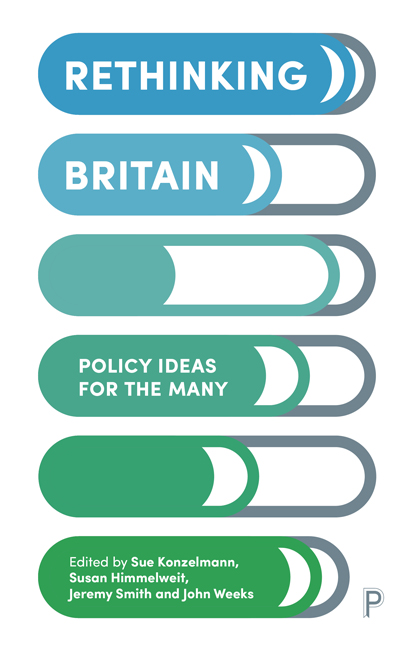Book contents
- Frontmatter
- Contents
- List of Tables and Figures
- The Contributors
- Foreword
- Introduction
- Interlude: ‘Mirror, Mirror, On the Wall – Who has the Highest Debt of All?’
- Part One Building a Full-Employment Economy: Introduction
- Part Two Public Investment – Prioritising Society Rather than Profit: Introduction
- Part Three Making Finance Work for Society: Introduction
- Part Four Genuine Social Security: Introduction
- Part Five How to provide for Social Needs: Introduction
- Conclusion
- Jargon Busters
- References and Further Reading
- Index
Interlude: ‘Mirror, Mirror, On the Wall – Who has the Highest Debt of All?’
Published online by Cambridge University Press: 11 March 2021
- Frontmatter
- Contents
- List of Tables and Figures
- The Contributors
- Foreword
- Introduction
- Interlude: ‘Mirror, Mirror, On the Wall – Who has the Highest Debt of All?’
- Part One Building a Full-Employment Economy: Introduction
- Part Two Public Investment – Prioritising Society Rather than Profit: Introduction
- Part Three Making Finance Work for Society: Introduction
- Part Four Genuine Social Security: Introduction
- Part Five How to provide for Social Needs: Introduction
- Conclusion
- Jargon Busters
- References and Further Reading
- Index
Summary
George Osborne justified his attempts to eliminate the UK's deficit, and eventually reduce debt, on the grounds that too much debt would damage the economy, increase borrowing costs and lead to a Greek-style crisis. So how much debt is too much?
The UK's figure of around 90 per cent of GDP was apparently enough to make George Osborne's eyes water – but Japan gets along quite happily with a far higher debt-to-GDP ratio of around 240 per cent of GDP.
Austerity was ‘sold’ to us on the false claim that a nation's accounts work like an individual, household or business budget. But since most of us can't set our own interest rates and would end up in jail if we tried printing extra money, there are some obvious problems with that argument.
A recent Guardian article, based on Office for National Statistics (ONS) data, gloomily concluded that ‘Household debt in UK [is] “worse than any time on record”’ (Inman, 2018), with British households among the most indebted of the major Western countries. The amount of debt that many of us are saddled with at the moment – around 200 per cent of household income (our equivalent to GDP) – completely destroys the argument for austerity. If a 90 per cent debt ratio is so critical – and national accounts work the same way as everyone else's – then why wasn't the government demanding that we pay it all off?
Nor is our debt the result of buying huge hi-tech TVs, new furniture and exotic holidays. Austerity makes wages go down in real terms, reduces government services, but leaves prices the same or higher – forcing people to bridge the resulting gap with credit cards or even the dreaded ‘payday’ loans. But there are limits – and we’re reaching them. Since we can't easily create more money, adjust interest rates or revalue the currency, citizens run out of credit capacity way before the country does. So the answer to the question of debt levels is all about affordability.
But what about the ones who got us into this mess in the first place? Before the 2008 crash, they had by far the highest debt levels of all. Many banks were leveraged by around 30:1 – with some going far beyond that. That level of debt – along with equally unnerving levels of risk – did, indeed, turn out to be too high.
- Type
- Chapter
- Information
- Rethinking BritainPolicy Ideas for the Many, pp. 7 - 8Publisher: Bristol University PressPrint publication year: 2019

